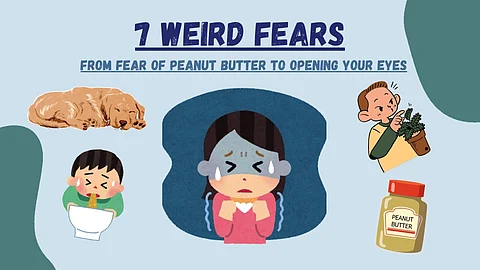This might sound silly at first, but for some, it's a serious source of anxiety. Arachibutyrophobia is the fear that peanut butter will get stuck to the roof of the mouth. While some people with this phobia can still eat peanut butter in small amounts, others avoid it completely.
What causes it?
It may stem from a fear of choking, sticky sensations, or even suffocation. In more extreme cases, it can be connected to texture sensitivity or traumatic experiences with food.
How it affects life:
People may avoid not only peanut butter but also other sticky or creamy foods, which can limit their diet or cause anxiety in social eating situations.


